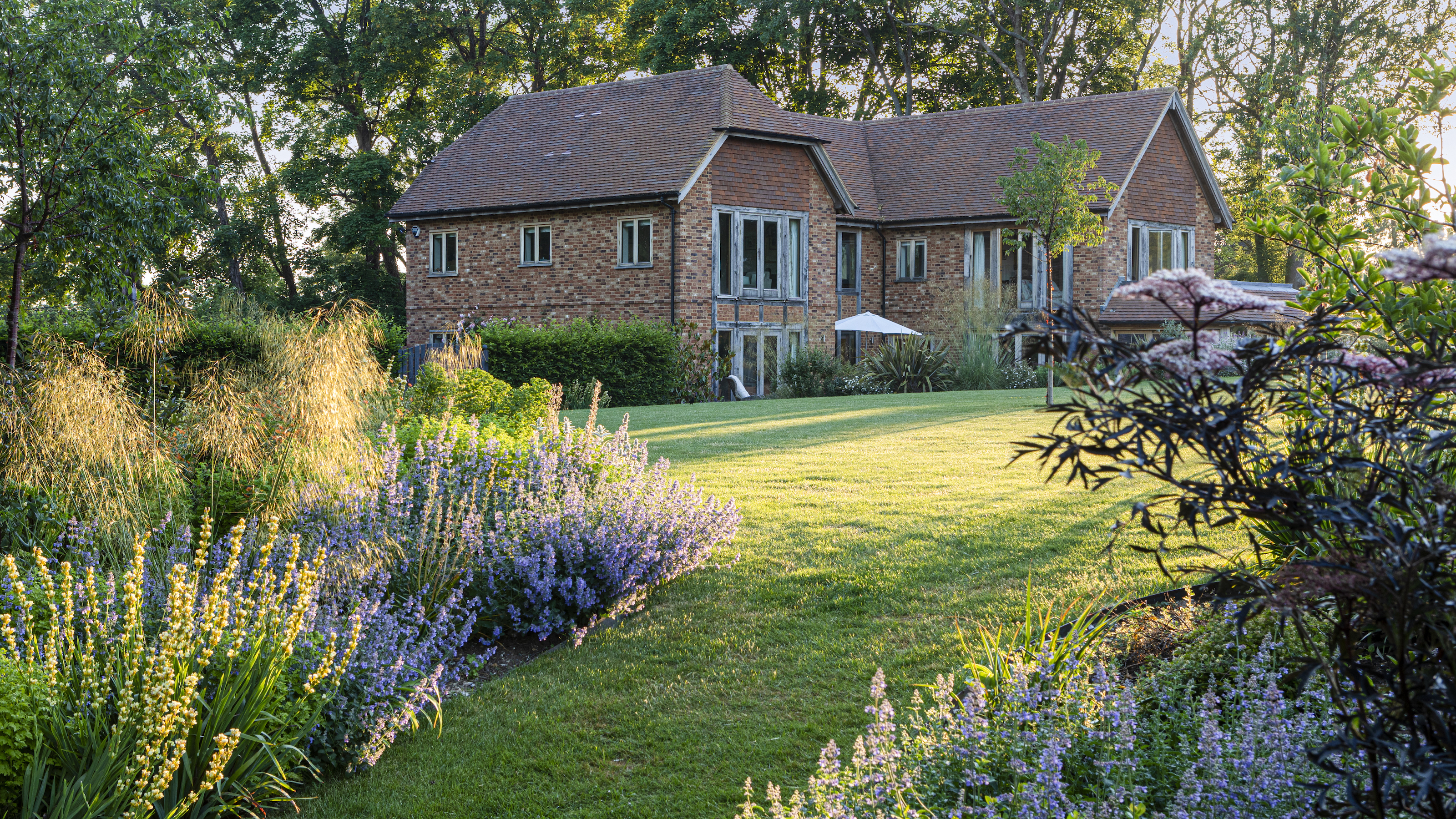
Knowing how to kill weeds in grass is made complicated by the sheer variety of weeds that can infiltrate your lawn. But rather than taking a one-product approach, sometimes tailoring your method depending on the weed can give you the best results.
We spoke to grass expert Guy Jenkins, Consumer Manager at Johnsons Lawn Seed, about the best way to get rid of weeds from your lawn and garden landscaping ideas without unintentionally killing off your lush grass blades too.
“Whether it’s grassy imposters like crabgrass, broadleaf and flowery varieties such as dandelions or hard to handle sedge, it's a rare lawn that doesn't suffer from weeds" he said. "Some of these are perennials, returning as soon as temperatures hit a certain degree each spring, whilst others die off after their year on earth.”
How to kill weeds in grass
Weeds are usually the most pressing problem for seasoned and newbie gardeners alike, sprouting as soon as the temperature outside creeps a few degrees past freezing and seemingly never resting until autumn comes around.
Expert lawn specialist Guy Johnson has put together a guide on the different types of weeds and the methods you can use to restore your lawn to its former glory.
1. Crabgrass
Crabgrass has a year-long life cycle and can grow anywhere there’s grass, especially in clay soils and compacted lawns.
Bring your dream home to life with expert advice, how to guides and design inspiration. Sign up for our newsletter and get two free tickets to a Homebuilding & Renovating Show near you.
Keep soil well aerated and avoid applying too much ‘quick green-up’, nitrogen-rich fertilisers, which crabgrass thrives on.
If you use a pre-emergent lawn treatment it will kill off freshly seeded turf grass as well as any weeds that might be germinating, so leave an eight-week gap between jobs. Once crabgrass has emerged you should remove when the plants are as young and small as possible, ensuring you get all the roots up.
Don’t try to tug out big growths of crabgrass or you’ll make a big hole and give the seed heads somewhere good to grow. You should also keep this beast off your compost heap, or its seeds will keep on spreading. Tolerate big clumps until autumn, let it die off naturally then make a fresh start the following spring.
Overseeding threadbare patches on your lawn in autumn with Johnsons Lawn Thickener or Quick Lawn will help prevent crabgrass from returning.
2. Perennial weeds
Some grassy weeds are perennial, including quackgrass, creeping bentgrass and niblewill. You can’t control these without also killing off lawn grass, all you can do is pull them up thoroughly and reseed the affected areas.
You can buy a specialist weed puller like this Fiskar weed puller on Amazon for around £40 (saves you needing to constantly bend down) or this cheaper Spear & Jackson 4059NB Elements Dandelion Weeder on Amazon to make the job easier.
3. Yellow Sedge
Yellow Sedge is another villain of the weed world. It frequently masquerades as grass, but you can distinguish it by the triangular stem, whereas grass has a round stem.
Sedge is also brighter, glossier and yellower than grass, with stems that stand more erect. It is fast growing and competitive with turf, grows quickly and will battle your grass for light and nutrients all summer.
If allowed to infect vegetable crops it can reduce production to nothing. You can try to pull up sedge while it is young and tender in spring, but this won’t deal with the big tuberous roots which can survive for years underground.
Unlike other weeds, the best solution for sedge is usually to apply a specialist herbicide. Ask your local garden centre or nursery which products are best suited to this troublesome weed.
Are all weeds bad in the garden?
Not all weeds are created equally and there are some that might present themselves as your enemy but are very good friends to pollinating insects including bees and butterflies. As people become more environmentally aware, the benefits of plants like dandelions, which are actually very nutritious as well as being great for insects, are coming to their awareness.
Dandelions are strong, however, and can easily outperform grass if left to their own devices. If you want to encourage pollinators whilst also having a lawn fit for personal use, you can designate certain patches for wilding and mow around them.
The rest of your flowers and other plants will certainly thank you, as will the rest of mother nature.

Guy is the consumer manager of Johnson's Grass Seed and DLF Seeds Ltd, which is one of the largest grass breeders in the world. He has spoken on a number of grass-seed topics including the best types of grass for children and pets as well as for harsh weather conditions.
Sam is based in Coventry and has been a news reporter for nearly 20 years. His work has featured in the Mirror, The Sun, MailOnline, the Independent, and news outlets throughout the world. As a copywriter, he has written for clients as diverse as Saint-Gobain, Michelin, Halfords Autocentre, Great British Heating, and Irwin Industrial Tools. During the pandemic, he converted a van into a mini-camper and is currently planning to convert his shed into an office and Star Wars shrine.

